Weeds With Pink Flowers (With Pictures): Identification Guide
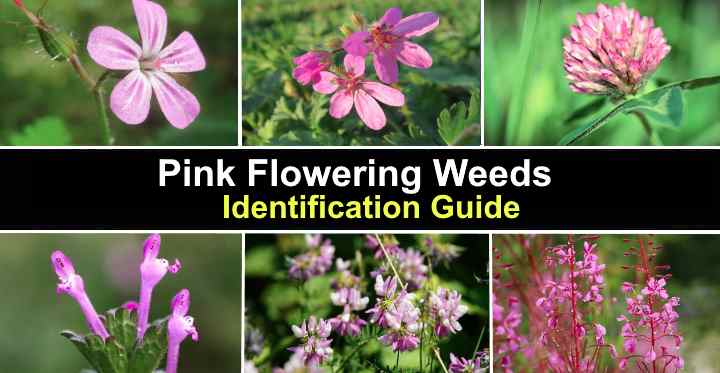
Weeds with pink flowers can be nuisance plants when they invade your lawn or grow in unwanted places. Despite adding a touch of vibrant color, pink-flowering weeds can cause havoc in a garden landscape. Many invasive weeds with pink flowers spread uncontrollably, choking out desirable plants and taking over a garden. Therefore, identifying pink-flowering weedy plants can help you decide which ones to keep and which to eliminate.
Of course, weedy plants with pink flowers can be useful when landscaping a front or backyard. Low-growing, mat-forming plants are useful for ground cover. And their weedy growth means they require little maintenance to thrive and quickly cover ground. Some plants with spreading, weedy growth are native wildflowers that look stunning in the countryside. However, they can become unwanted intruders in your yard.
This article is an identification guide to help recognize weeds with pink flowers. Pictures and descriptions of the pink-flowering weeds will help with identification.
What Are Weeds With Pink Flowers?
Weeds with pink flowers are wild, non-cultivated, or invasive plants characterized by their vibrant pink blossoms. Often unwelcome in gardens, these fast-growing, spreading plants possess a distinct charm with their colorful blooms. The weedy plants can be low-growing flowers like shining geraniums or tall pink weeds like common milkweed.
Pink-flowering plants are typically considered weeds when growing in an undesirable location or competing with cultivated plants. The pink weeds can negatively impact the growth or health of desirable plants. Weeds are often fast-growing, hardy, and prolific reproducers, making them challenging to control. They can disrupt ecosystems and agriculture.
Pink Flowering Weeds (With Pictures and Descriptions)
Let’s look in detail at some common weeds with pink flowers that could negatively impact your garden landscape.
Roberts Geranium (Geranium robertianum)
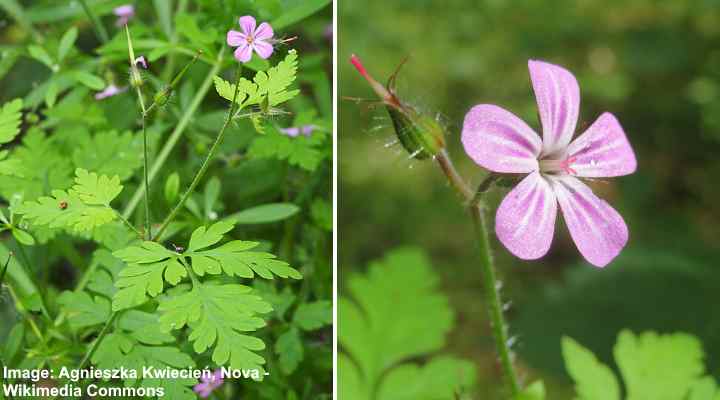
Also called herb-Robert, this annual or biennial plant is a common pink-flowering weed that thrives in shaded landscapes where it can quickly spread. Invasive in North America, the weedy plant is identified by its star-shaped, five-petalled pink, tubular flowers, green or reddish stems, small, deeply divided leaves, and strong odor when crushed.
Roberts geranium is a nuisance plant in gardens because it competes with other plants for resources like water and nutrients. It also spreads easily through its seeds, which can be dispersed by wind, animals, or garden tools. Roberts geranium grows in flower beds, lawns, and under shrubs.
Controlling herb-Robert in gardens can be challenging. It spreads through self-seeding and thrives in various soil types and environmental conditions. Therefore, pulling the plant by hand before its flowers go to seed is vital to prevent this pink weed from becoming established.
Shining Geranium (Geranium lucidum)
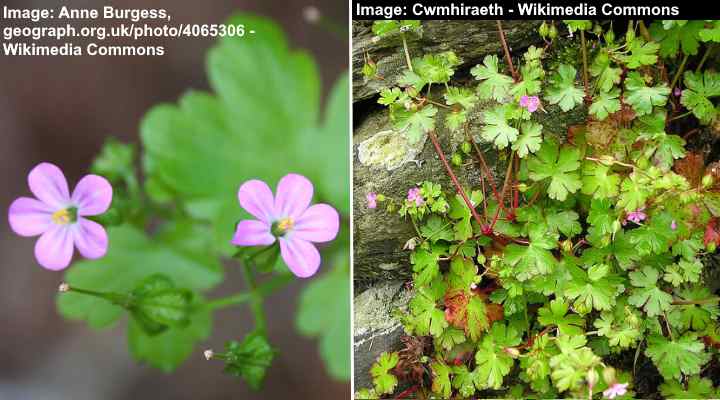
Shining geranium, or shining cranesbill, is a weedy annual plant with small pinkish flowers, deeply lobed leaves and reddish stems. The weed is identified by its bright pink flowers with five petals, kidney-shaped lobed leaves, and long, spreading stems. The invasive plant grows 4” to 15” (10 – 35 cm) tall and spreads through seeds.
A feature of shining geranium is its exploding seed pods. They disperse seeds far from the host plant, allowing the plants to invade gardens and lawns. Several states in the United States list shining geranium as a noxious weed because it overwhelms native plants.
Regular weeding to dig up shining geranium can help prevent it from becoming a problem in your yard. Additionally, a thick layer of mulch around shrubs in flowers can smother and suppress invasive geranium growth. Shining geranium can compete with native plants for resources and shade them out, so keeping it under control is important to preserve your yard’s biodiversity.
Pink Valerian (Valeriana officinalis)
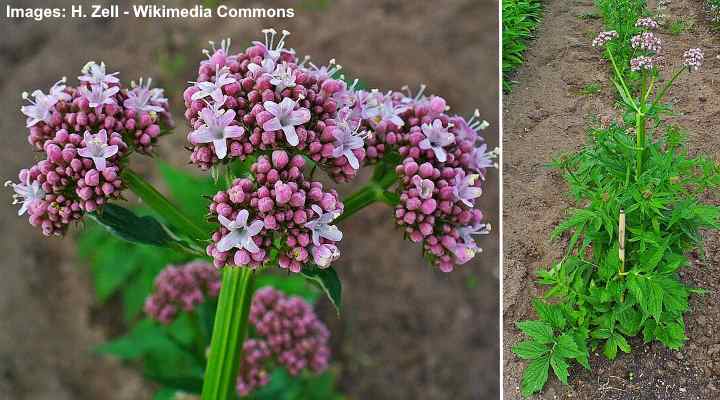
Pink valerian, or garden heliotrope, is a noxious pink-flowering perennial weed that spreads by rhizomes and self-seeds. Identifying features of the tall pink weed are its cymes (flower clusters) of white to pink flowers, aromatic lance-shaped leaves, and strong-smelling roots. The weedy plant grows 3 to 5 ft. (1 – 1.5 m) tall.
Pink valerian requires control because it spreads easily in damp locations and drier soils. It thrives in cool summer climates and can quickly colonize native habitats and compete with cultivated plants.
In some regions, pink valerian is a desirable plant due to its speedy growth, attractive flowers, and ability to attract pollinators. It also has ornamental value in herb gardens, cutting gardens, or borders. Despite its attractive flowers and fragrant aromas, it can become invasive if not properly controlled.
Crown Vetch (Securigera varia)
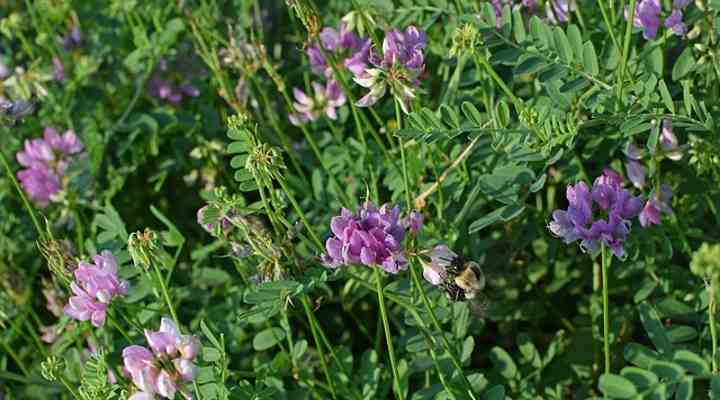
Crown vetch is a spreading non-native pink-flowering perennial weedy plant that thrives in most soil types. Crown vetch is identified by its dense clusters of pink and white flowers, compound leaves with numerous leaflets, and rapid growth. The pink weed spreads through underground rhizomes and seed dispersal.
Controlling crown vetch can be challenging due to its extensive root system. It also has a remarkable ability to re-sprout from the smallest root fragments left in the ground. If crown vetch has invaded lawns, regular mowing can help prevent seed formation and control the pink weed. In flower beds, crown vetch has a creeping growth habit, shading out cultivated plants and reducing biodiversity.
In some cases, crown vetch can be useful for erosion control and pink-flowering ground cover. However, if uncontrolled, it can become a severe weed problem in lawns and gardens. Therefore, it’s vital to manage the weed properly.
Redstem Stork’s Bill (Erodium cicutarium)
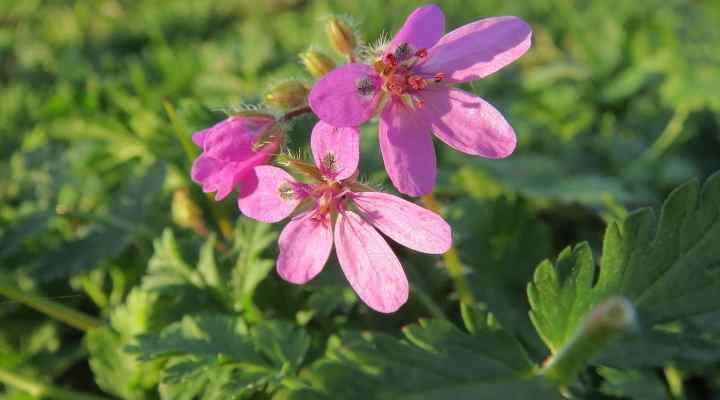
Redstem stork’s bill, or redstem filaree, is an aggressive pink-flowering annual weed that can form dense mats on lawns and gardens. Identification features of the weed are its small, five-petaled bright pink flowers, deeply lobed leaves, and seed pods that resemble a stork’s beak. It grows 2” to 20” (5 – 20 cm) tall.
The weed gets its name from its reddish stems, covered in small hairs and unusual seed pod shape. The weed spreads rapidly by ejecting hairy seeds from the pods. These have a unique ability to dig themselves into the ground and take root.
However, completely eradicating redstem stork’s bill weeds from lawns is challenging. Mowing can help remove the pink flowers, but their roots remain. Therefore, natural weed killers can help with small infestations. In flower beds and vegetable patching, removing the weeds by hand and tiling the ground can help remove residual roots.
Common Milkweed (Asclepias syriaca)

Common milkweed is a tall pink weedy plant with fragrant clusters of pinkish starry flowers. The plant is native to North America and is a host plant for monarch butterflies. Identification features of milkweed are its summer-blooming pink flowers, lance-shaped leaves with reddish veins, and large seed pods.
Common Milkweed is not considered a weed in natural areas. Still, its growth can become weedy and invasive in certain garden settings. It spreads rapidly through underground rhizomes and can quickly take over flower beds if not controlled. Also, the thick stems contain a toxic milky substance that can irritate the skin.
Suppose you want to attract butterflies and pollinators to your garden but are concerned about common Milkweed becoming invasive. In that case, you can plant other native milkweed species that are less aggressive, such as swamp milkweed (Asclepias incarnata) or butterfly weed (Asclepias tuberosa).
Himalayan Balsam (Impatiens glandulifera)
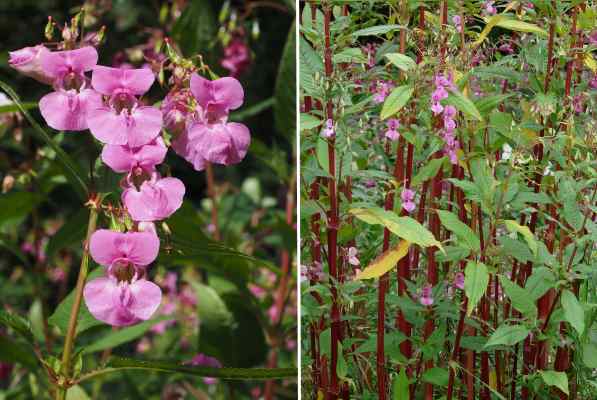
Himalayan balsam is a highly invasive annual weed with pink flowers. This pink-flowering weed quickly gets out of control, smothering other vegetation as it spreads. The weed is identified by its vibrant pink flowers with a hooded shape and lanceolate leaves growing on reddish stems.
The invasive plant spreads aggressively by shooting its seeds up to 22 ft. (7 m) away. These can remain dormant in the ground for several years before sprouting, making the weed difficult to control. The weedy pink plant thrives near waterways. Therefore it often invades front and backyards located near streams or rivers.
The best way to control Himalayan balsam is by removing the plants before they can set seeds. Regular mowing and cutting can help prevent the weed from establishing and spreading. Additionally, pulling the plants by hand can be effective. However, you must remove the entire root system to prevent regrowth.
Dragon’s Mouth (Arethusa bulbosa)
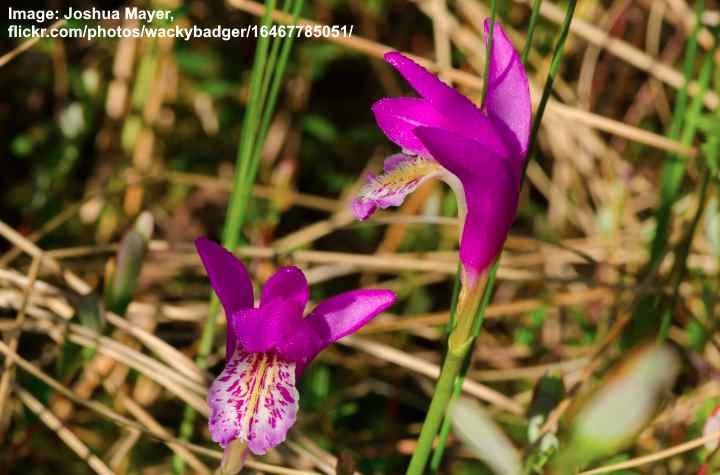
Dragon’s mouth is a beautiful perennial wildflower with pink orchid-like blooms native to North America. This pink-flowering plant is identified by unusual flowers. They have a drooping lip petal and several upward-pointing pink petals resembling a dragon’s mouth. Although described as a weed because it grows almost anywhere, it has stunning pink flowers that are highly sought-after.
Dragon’s Mouth is typically found in wetland areas like bogs, marshes, and swamps. It requires moist soil and full sun to thrive. The plant’s flowers bloom on a single stem that can grow up to 12 inches (30 cm) tall, and it produces one or two flowers at the top. In some states, the pink wildflower is rare and should not be picked or disturbed in its natural habitat.
Rosebay Willowherb (Chamaenerion angustifolium)
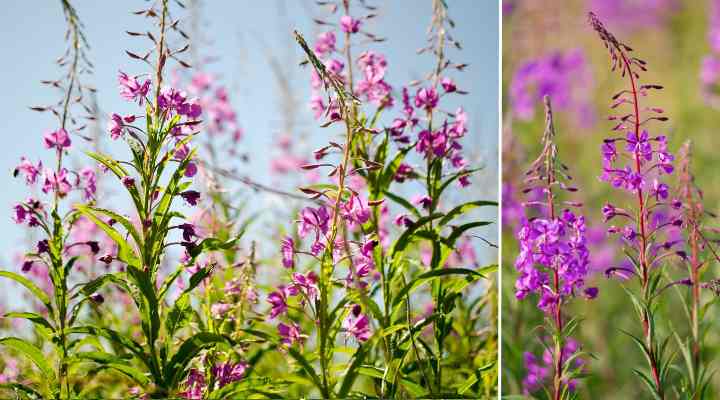
Also called fireweed, rosebay willowherb is a weedy plant that can quickly colonize lawns, gardens, and open areas. This perennial herbaceous weed is characterized by its tall, slender reddish-brown stems, narrow linear leaves, and conical clusters of pink flowers that bloom throughout the summer. The weed grows 1.5 to 8 ft. (0.5 – 2.4 m) tall.
Rosebay willowherb spreads rapidly by wind dispersal because its tiny seeds are covered in silky hairs. Once growing, the plant becomes invasive and spreads by its extensive underground roots. It will commonly invade bare patches of grass and flower beds, eventually becoming the dominant species.
To prevent rosebay willowherb from spreading, it is important to mulch bare ground and maintain healthy lawns in sunny areas. Additionally, preventing the weed from going to seed is crucial in controlling its spread.
Violet Wood Sorrel (Oxalis violacea)

Violet wood sorrel is a common lawn weed with pink flowers. This invasive perennial plant is identified by its delicate light pink five-petalled flowers and heart-shaped leaves growing in groups of three. The seeds easily germinate in lawns, turning turfgrass into a sea of pink when blooming from spring throughout the summer.
Violet wood sorrel grows as spreading clumps up to 16” (40 cm) tall. It is considered a nuisance weed because it spoils the appearance of lush turf grass. Also, its rapid growth means it competes with other plants for nutrients. Additionally, it is tolerant of shade and sunny conditions, making it adaptable to various environments.
Controlling the violet wood sorrel can be challenging, as it has a deep root system that can quickly regrow if not completely removed.
Spreading Dogbane (Apocynum androsaemifolium)
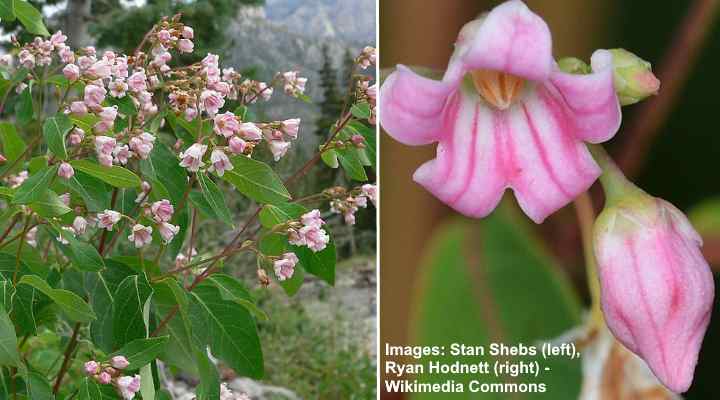
Spreading dogbane is a native plant that can be problematic in gardens and open areas. This perennial weed produces clusters of small, bell-shaped pink and white flowers and long, narrow leaves. Despite the attractive flowers, the plant can be difficult to eliminate as it spreads through underground rhizomes.
Spreading dogbane can be invasive and compete with desirable ornamental plants for resources. It can quickly take over an area if left unchecked. If left to grow, the bushy weed grows rapidly to reach 2 to 3 ft. (0.6 – 1 m) tall. It also thrives in shade and sunlight, meaning it grows easily where other plants may struggle.
Controlling this pink and white-flowering weed can be labor-intensive as you must remove the entire root system. Once removed, mulching bare ground, and planting native vegetation can help prevent the weed from returning.
It is important to note that spreading dogbane is toxic to humans and animals if ingested. Therefore, handling this weed with care and wearing gloves when removing it from your yard is essential.
Rock Harlequin (Corydalis sempervirens)
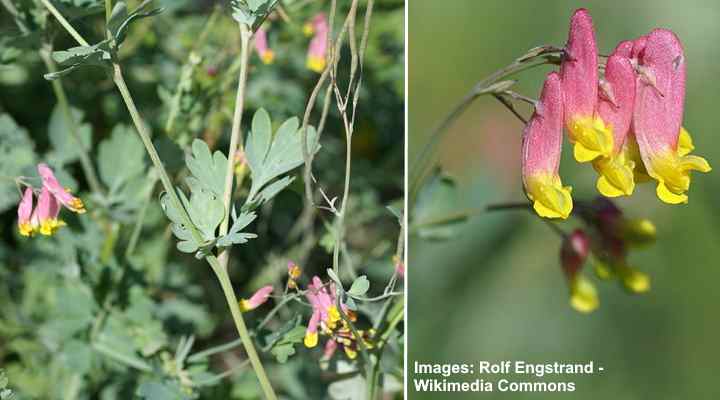
Rock harlequin is a native perennial plant in North America that can become weedy if not controlled. Despite being called a weed, the beautiful plant has stunning pale pink tubular flowers with yellow tips. Additionally, the weedy plant has delicate, fern-like leaves creating attractive mounds. The clumping plant grows 1 to 4 ft. (0.3 – 1.2 m) tall.
Rock harlequin grows easily and becomes weedy because it naturalizes by reseeding. Without control, clumps of foliage and pink flowers quickly take over open areas. It can smother cultivated plants and disrupt ecosystem balance. Additionally, the plant has a deep root system that makes it difficult to eradicate.
Some uses in a garden landscape for rock harlequin include soil erosion prevention, rock gardens, and shade gardens. However, ensure to monitor the plant’s growth to prevent it from becoming an invasive pink-flowering weed.
Field Bindweed (Convolvulus arvensis)
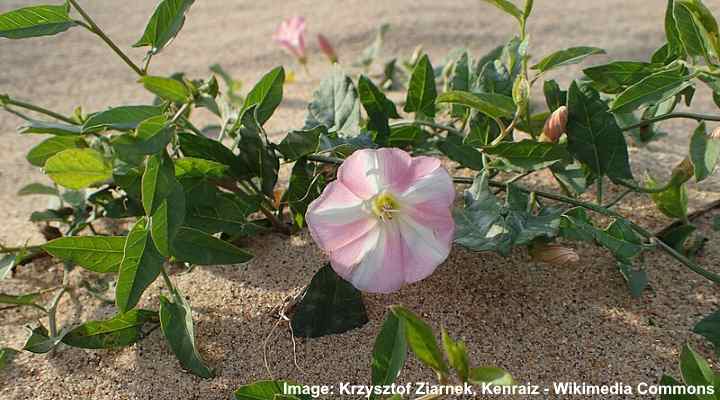
Field bindweed is one of the most troublesome pink-flowering weeds because it’s difficult to control. The spreading perennial vine is identified by its pink trumpet-shaped flowers with a white star in the throats and deep green, square or arrow-shaped leaves growing on long vines. Field bindweed can grow up to 3 ft. (1 m) long.
Eradicating field bindweed is challenging due to its large root system. The roots grow as much as 9 ft. (2.7 m) deep and produce horizontal root runners. The best control methods are hand-pulling and mulching. You can also use boiling water to kill the weed if there is only a small patch.
Field Madder (Sherardia arvensis)
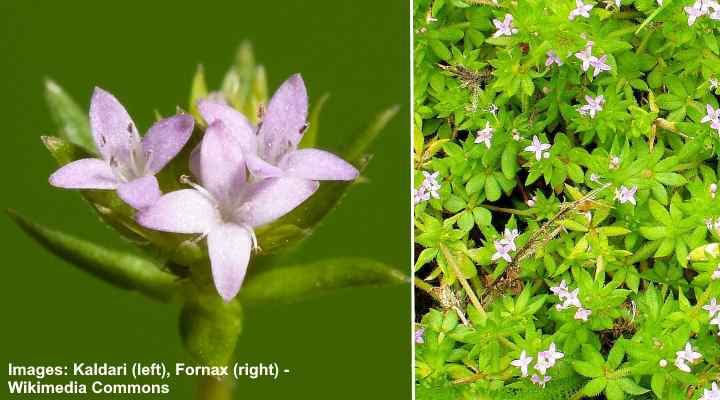
Field madder is a low-growing, annual pink-flowering weed with trailing stems and four-petalled, star-shaped flowers. The weedy plant identifying features are its small tubular pink or lilac flowers 0.12” (3 mm) in diameter and whorls of pointed, bristly leaves growing on upright stems. Field madder can quickly spread and take over areas if left uncontrolled.
Controlling field madder is important because it competes with desirable plants for resources and can reduce crop yields. The vigorous plant forms dense mats of rounded clumps in turfgrass and vegetable patches. Hand-pulling or regular mowing can help control the weeds in gardens and lawns. On lawns, low mowing can prevent flowers from forming and prevent the weed from spreading.
Spotted Knapweed (Centaurea stoebe)
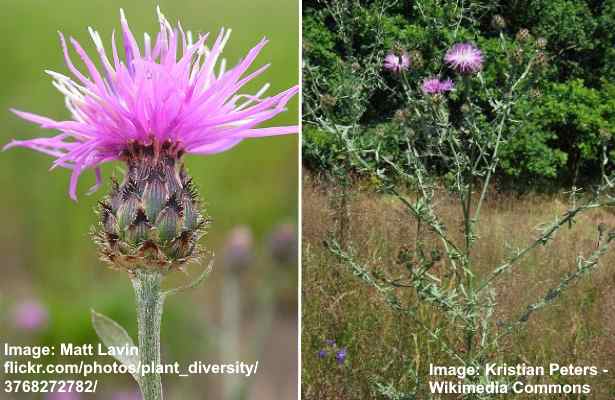
Spotted knapweed is an invasive biennial or short-lived perennial weed with pink or light purple flowers blooming in early summer. Identifiable features of spotted knapweed are its spiky pink flower heads with a crown of pink stamens, deeply lobed leaves, and spreading nature. This weed looks like Canada thistle and is just as noxious.
Spotted knapweed is invasive through seed dispersal on the wind. A single plant can release over 4,000 seeds a season and remain viable in the soil for up to eight years. Spotted knapweed also hinders the growth of native plants by releasing growth-inhibiting compounds —a process called allelopathy. This means that areas infested with spotted knotweed lose their biodiversity.
Controlling spotted knapweed can be challenging. The most effective control method is hand-pulling the stems and roots from the ground. If knapweed has taken over a lawn, it is vital to mow it monthly throughout the growing season until the first frost.
Red Clover (Trifolium pratense)
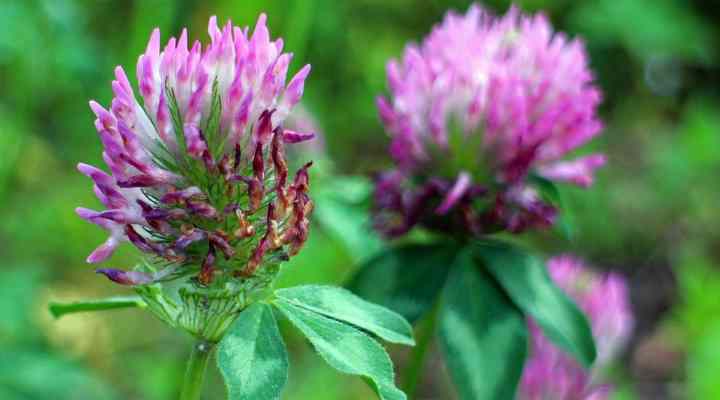
Red clover is a common short-lived perennial weed with pink-magenta flowers that invade garden beds and lawns. The low-growing spreading plant has slender stalks, small oblong leaves, and pink rounded flowers that bloom from spring through fall. Red clover can quickly spread due to its clumping nature, spoil the appearance of lawns, and take over areas if not controlled properly.
Red clover is often considered a beneficial plant for its ability to fix nitrogen in the soil and attract pollinators. However, it becomes a nuisance when it dominates lawns or grows in unwanted places. It self-seeds easily and spreads aggressively through rhizomes. The best way to completely remove clover naturally is by hand pulling it after heavy rainfall or thorough lawn watering.
Henbit (Lamium amplexicaule)
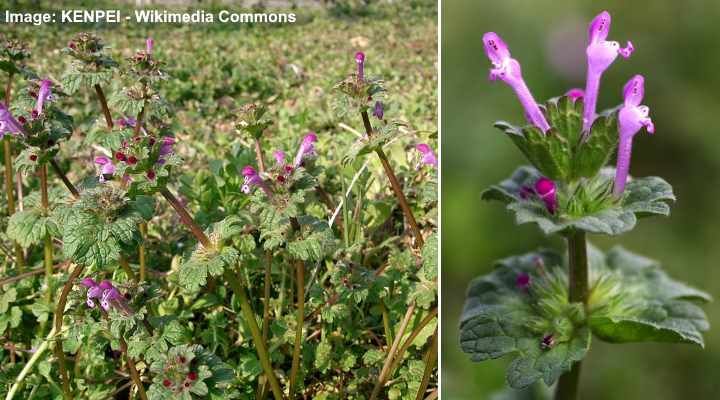
Henbit is a flowering weed often seen in the grass with small pink, two-lipped tubular flowers and heart-shaped leaves with scalloped edges. It is a common annual creeping, low-growing lawn weed that emerges in early spring. This broadleaf weed spreads aggressively in turfgrass due to its seeds and tough taproots. Also called deadnettle, the annual weed grows 4” to 10” (10 – 25 cm) tall.
You’ll find henbit in fields, roadsides, parks, lawns, and flower beds. While used for ground cover on slopes to prevent erosion, it’s unwelcome in lawns due to its rapid spread. Hand pulling or using a weed control product specifically designed for broadleaf weeds can effectively eliminate henbits. Also make sure to mow the lawn regularly to prevent henbit’s seeds from spreading.
Bull Thistle (Cirsium vulgare)
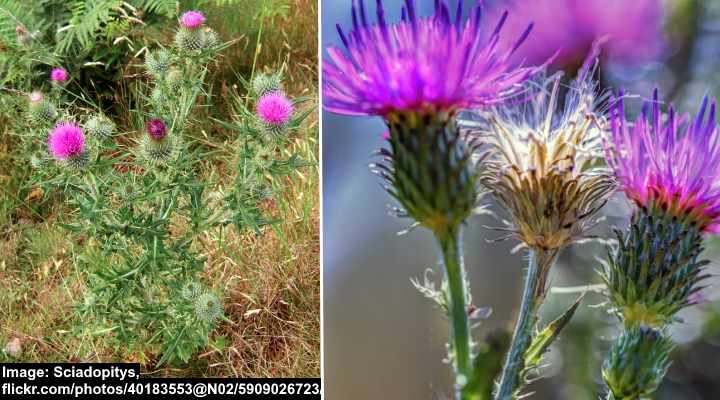
Bull thistle is a common pink-purple flowering weed that can invade gardens and take over flower beds. The noxious weed is identified by its gray-green spiny leaves, and erect stems growing 3 to 5 ft. (1 – 1.5 m) tall.
Also called spear thistle, the weed has beneficial properties for attracting pollinators like monarch butterflies. However it is an unwanted weed by most people because it forms dense thickets, crowding out native plants. It spreads through seeds and a deep tap root, so removing the flowers and digging out as much of the root as possible is the best control method.
Also regular mowing and maintaining a healthy lawn can prevent bull thistles from becoming established.
Related articles:
